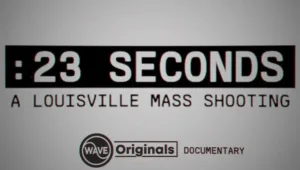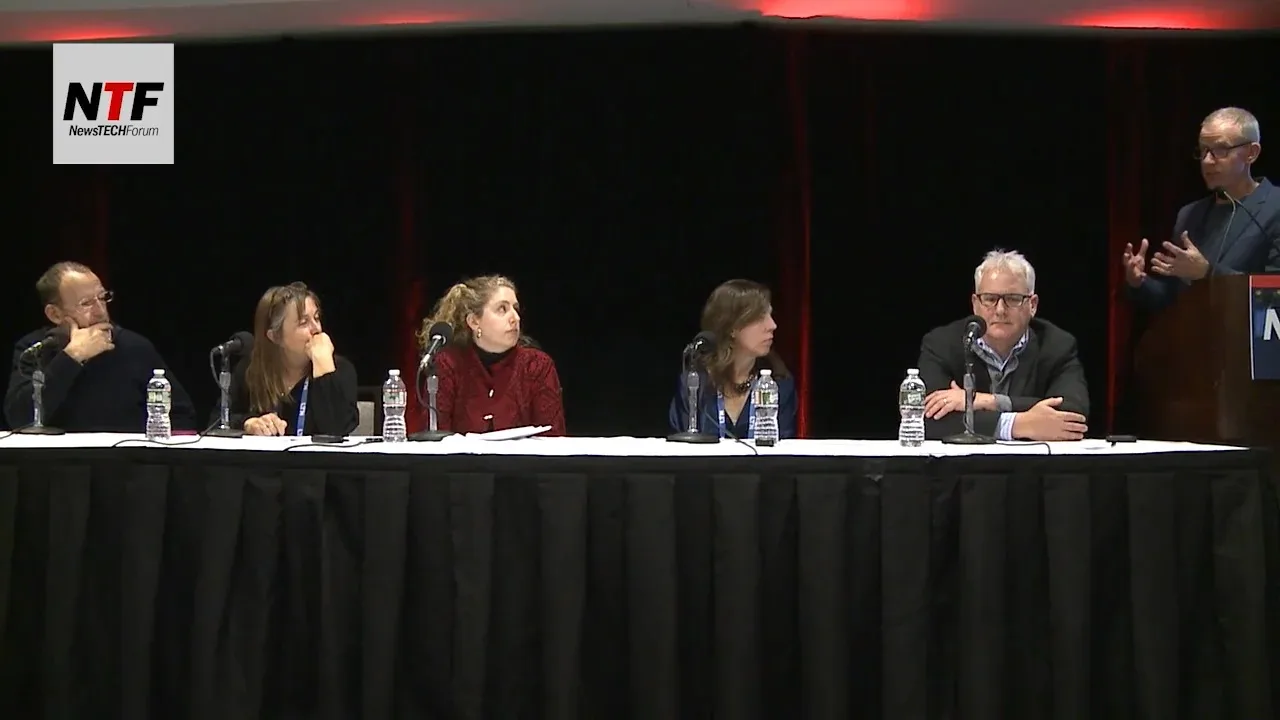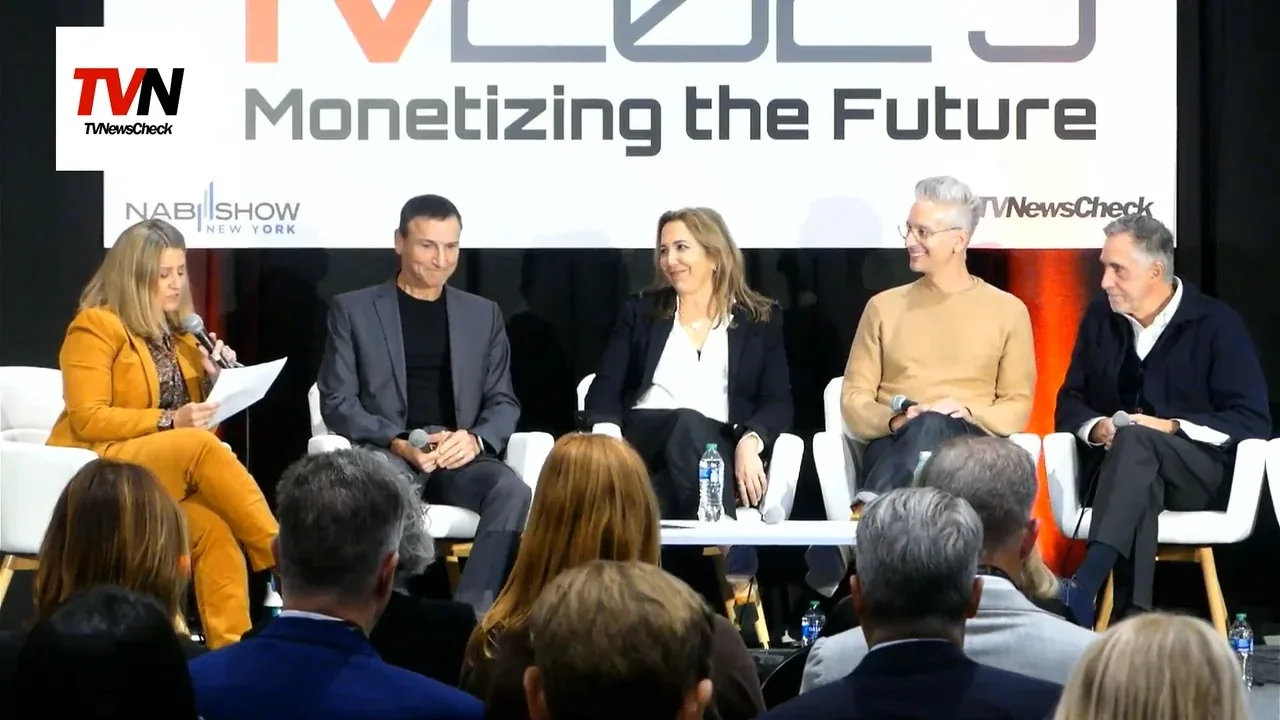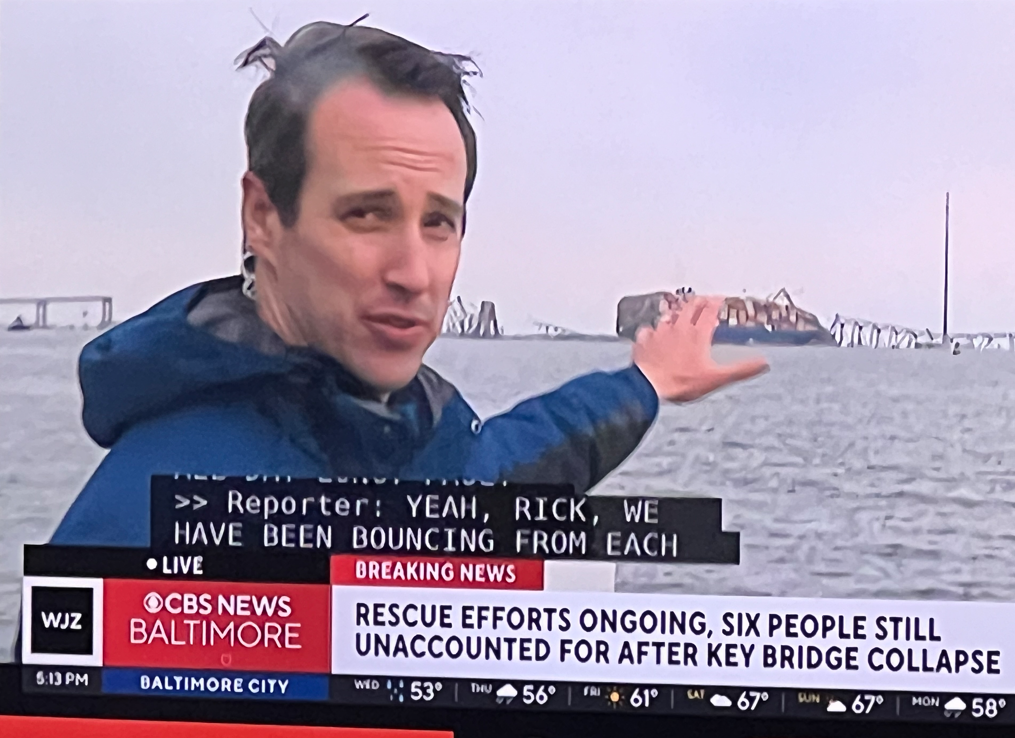
Meta’s chief executive made a rare court appearance as the Federal Trade Commission tries to block his company’s purchase of the virtual reality start-up Within.

The Federal Trade Commission on Wednesday filed for an injunction to block Meta, the company formerly known as Facebook, from buying a virtual reality company called Within, potentially limiting the company’s push into the so-called metaverse and signaling a shift in how the agency is approaching tech deals.
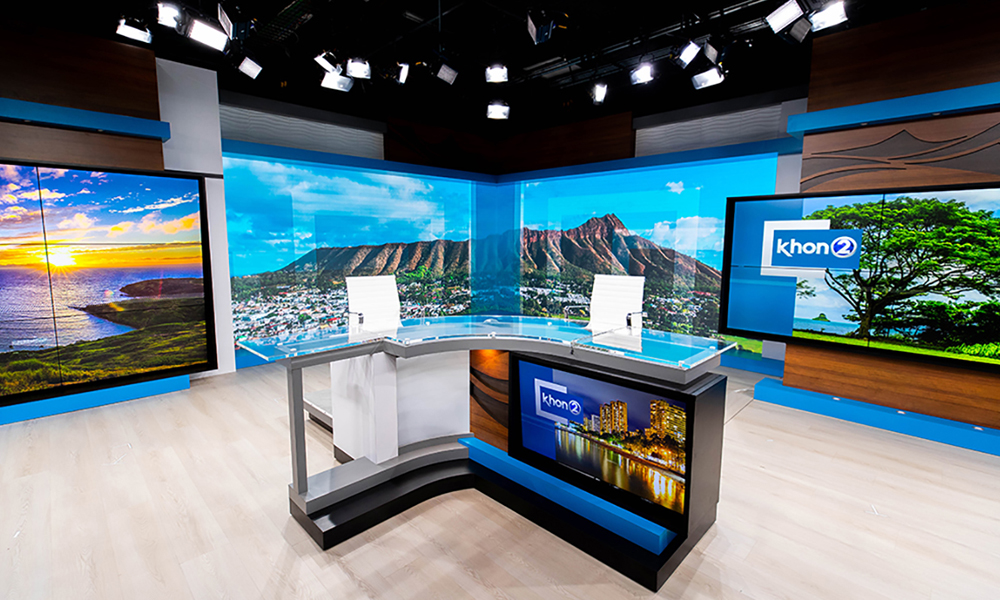
Video walls are getting “bigger and bigger and cheaper and cheaper,” prompting wider adoption among broadcasters who are discovering a broad raft of storytelling and set design opportunities in their adoption. Above, FX Design Group delivered the set for KHON Honolulu, which includes a 3.9 pixel pitch video wall background that stretches nearly 33 feet long and just over 8 feet high.
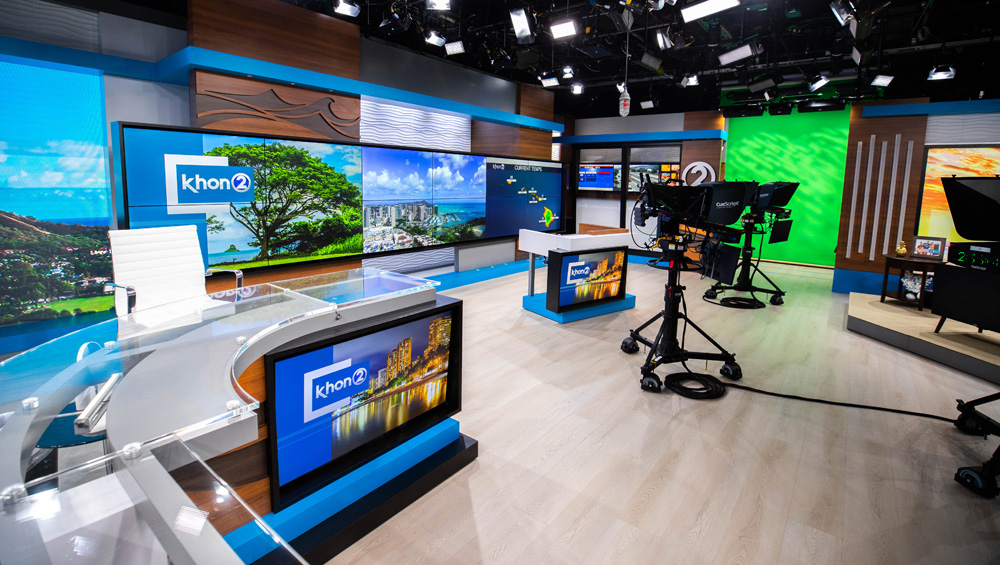
Video walls continue to dominate studio design trends in the U.S. with ever-broader use framed by the “warmth” of natural materials and local personality. Abroad, newsrooms have been more embracing of the virtual reality sets of which domestic broadcasters are still wary. Above, FX Design Group designed and installed the KHON Honolulu set, which features large video walls.

Cutting-edge news technologists from The Weather Channel, CNN, Brainstorm and Planar are leading a vanguard of broadcasters into including augmented and virtual reality in their presentations. They told a TVNewsCheck webinar last week that advances in video game technology are making that possible.
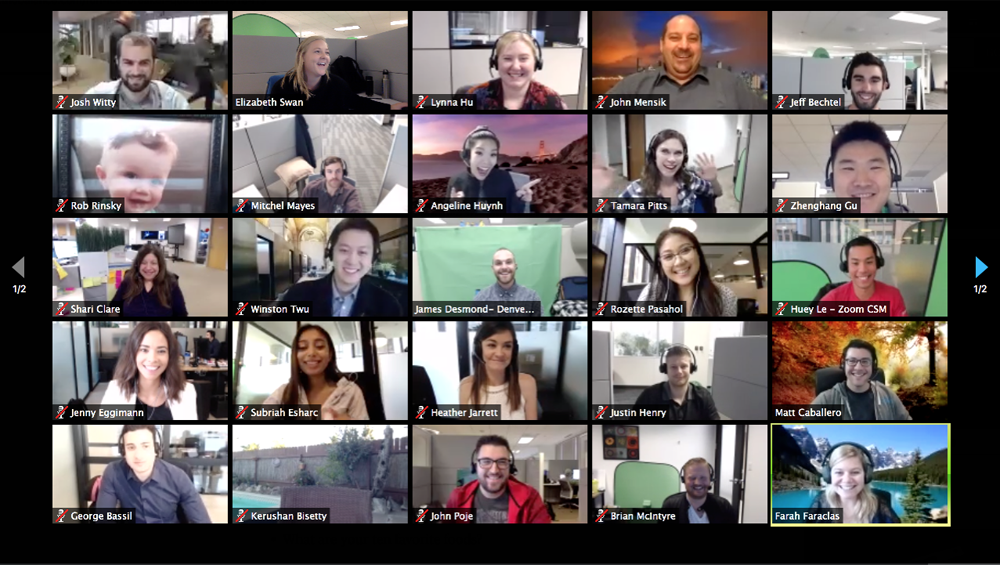
We streamed, we Zoomed, we ordered groceries and houseplants online, we created virtual villages while navigating laptop shortages to work and learn from home. In many ways, 2020′s pandemic-induced isolation […]
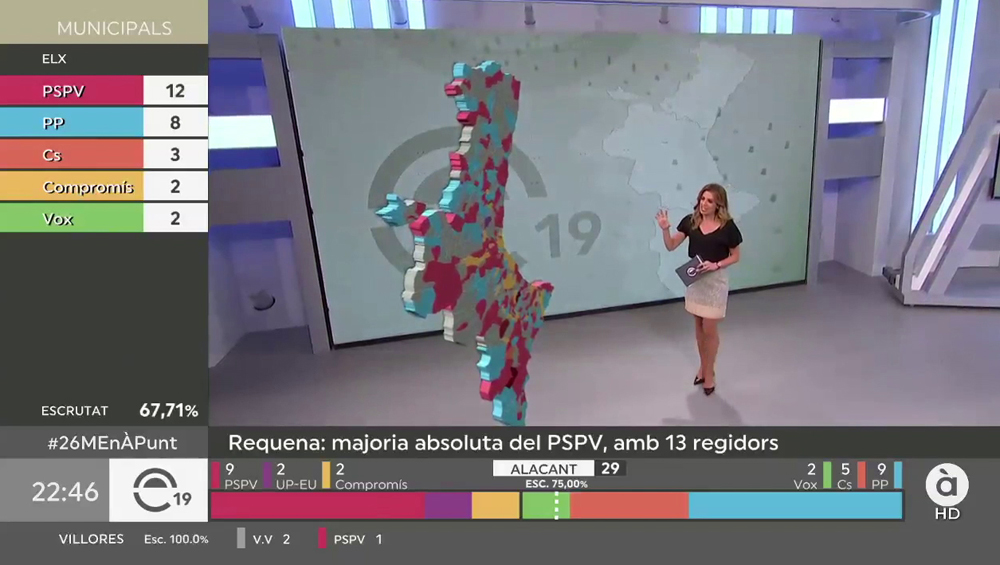
Broadcasters won’t be hampered by remote working conditions for election night 2020, and they have a bevy of new graphics and augmented reality tools to help them tell the story. Above, Broadcasters can make complex data easy for viewers to grasp through augmented reality objects generated by Brainstorm graphics using real-time data from different sources. A Punt, a regional channel in Spain, covered municipal elections, and this interactive map shows the winning party in each town, with detailed results for the seats won in each town are shown on the chart of the left side. The bars on the bottom show a rundown of all the cities, in alphabetical order, with the results in real time.
Collins | A Glimpse Into The Future Of Entertainment

The pandemic has sharpened focus on new technologies, including virtual applications. “In the next five to seven years, you’re going to see multiple waves of virtual devices ingrained into mass consumer electronics,” predicts Ted Schilowitz, futurist for Paramount Pictures.
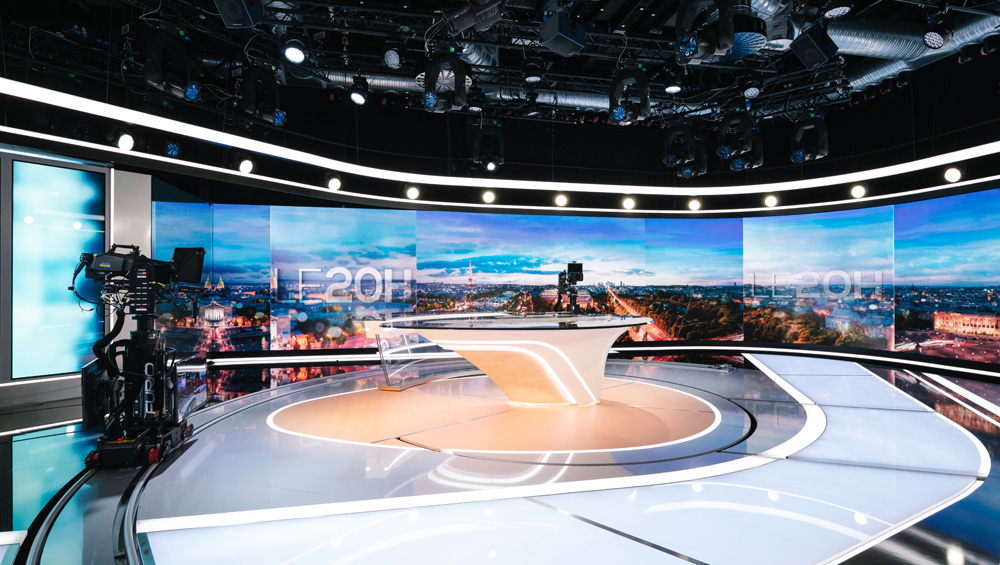
Despite pushing newsrooms temporarily into mostly remote production, set design vendors say COVID-19 won’t have a lasting effect on where sets were heading before the pandemic. They say viewers are likely to see more LED panels and walls, virtual sets and augmented and virtual reality usage in news studios. Above, for the TF1 broadcast news studio in France, Planar delivered a 750-square-foot curved video wall.
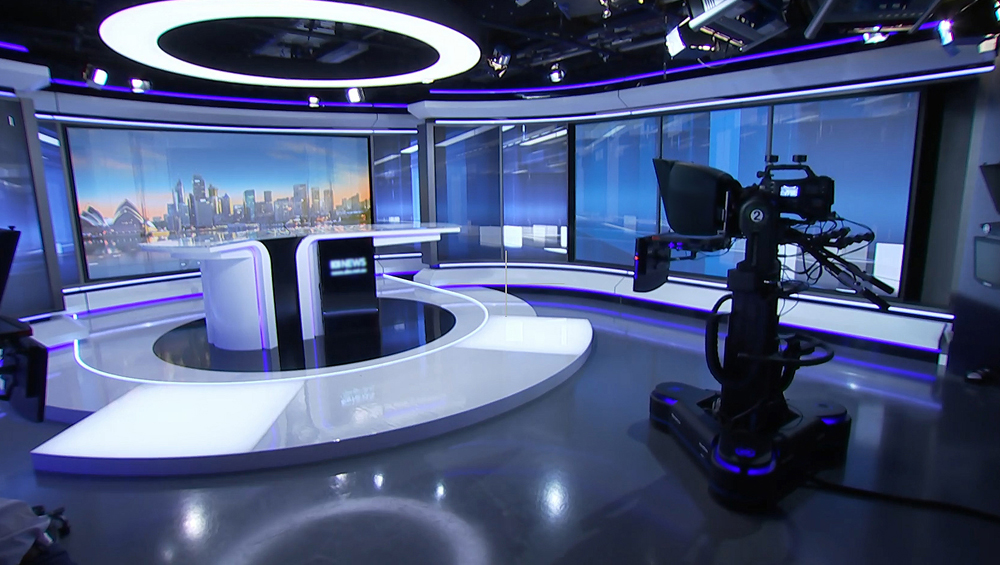
Robotic pedestals for newsroom cameras are fast evolving, allowing for more creative shots, AR and VR integration and far greater operational efficiency. Next up: full autonomy. Above: The Telemetrics OmniGlide Roving Platform features an innovative new drive system that is completely automated and leverages advanced software and XY sensors to “learn” the environment it is operating in.

Developments in TV news graphics have seen a host of improvements from better real-time flexibility to more streamlined workflows and even monetization prospects.

A few years ago, virtual reality was all the rage in Hollywood, helping to fuel the rise of Silicon Beach with the promise of reinventing the entertainment business. But investment in the technology has slowed dramatically in recent years, and what seemed like a promising boom has largely fizzled.
Virtual Reality’s Buzz Faded At CES
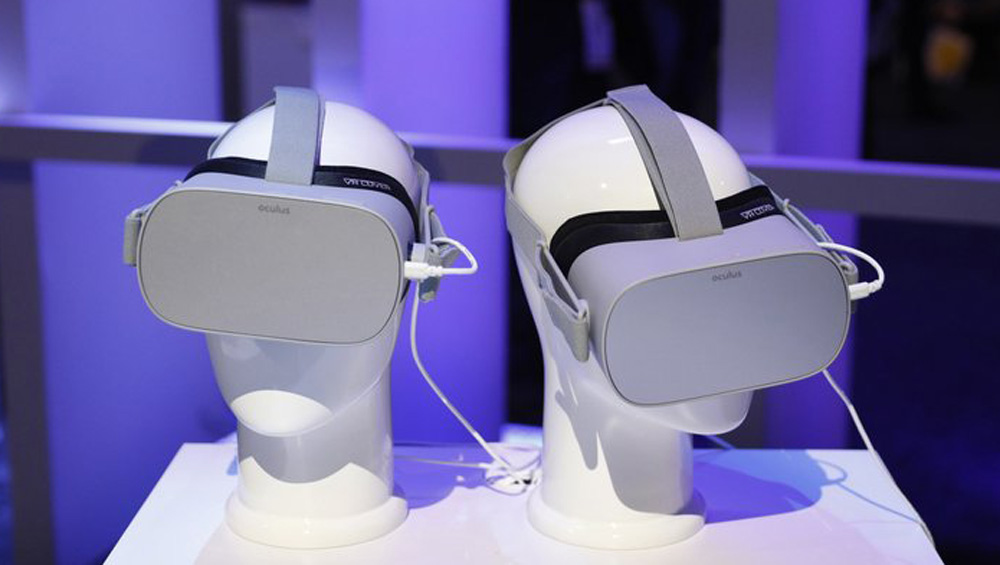
A few years ago, VR products from Samsung, Oculus, HTC and Sony seemed omnipresent and unstoppable at CES. These days, VR is mostly a niche product for gaming and business training, held back by expensive, clunky headsets, a paucity of interesting software and other technological shortcomings.
On The NAB Exhibit Floor: SpherePlay
SpherePlay | Booth N3438SP-A| www.sphereplay.com SpherePlay is dedicated to the development of technological solutions that deliver enriched immersive experiences with a maximum of realism, fidelity and user-friendliness. SpherePlay solutions allow […]
On The NAB Exhibit Floor: SpherePlay
SpherePlay | Booth N3438SP-A | www.sphereplay.com SpherePlay, developer of the leading VR platform for publishers and broadcasters, today introduced the new Experience Manager console for the company’s innovative Launcher virtual […]
On The NAB Exhibit Floor: SpherePlay
SpherePlay | Booth N3438SP-A | www.sphereplay.com SpherePlay is dedicated to the development of innovative technological solutions that deliver enriched immersive experiences with a maximum of realism, fidelity and user-friendliness. SpherePlay […]
Virtual and augmented reality give journalists the ability to tell stories that the audience can experience rather than simply consume. Both involve computer-generated imagery but use it differently.
When VR first made its major CES reemergence via Oculus Rift years ago, it was jaw-dropping. Those moments, since, are harder to come by. But there were discoveries, and trends, and things to talk about in AR and VR AT ces 2018. You just had to pay attention.
VR And AR Becoming Standard News Tools

Turner Sports has partnered with Intel to broadcast weekly NBA on TNT games in virtual reality beginning with the 2018 NBA All-Star Weekend, which will be held Feb. 16-18, 2018. In the multi-year deal, Intel will become the exclusive provider of VR for the NBA on TNT and deliver live content for weekly matchups via its Intel True VR technology.
SAN FRANCISCO (AP) — Facebook CEO Mark Zuckerberg seems to be realizing a sobering reality about virtual reality: His company’s Oculus headsets that send people into artificial worlds are too […]
 Watching TV sports in virtual reality is currently a neat idea marred by uneven and distant-feeling execution. Anick Jesdanun says viewers should look to what’s coming, not necessarily what’s in their headsets now. Viewers would do best to think of VR as a supplement, rather than replacement, to regular TV sports viewing. And tech developments are promising better views and better immersive replays on the way.
Watching TV sports in virtual reality is currently a neat idea marred by uneven and distant-feeling execution. Anick Jesdanun says viewers should look to what’s coming, not necessarily what’s in their headsets now. Viewers would do best to think of VR as a supplement, rather than replacement, to regular TV sports viewing. And tech developments are promising better views and better immersive replays on the way.
Virtual reality has emerged as one of the hottest new areas, with Facebook, Google and Microsoft pouring resources into development. Facebook’s $2 billion purchase of Oculus in 2014 signaled how important the platform finds the area. Publishers and marketers have followed suit with their own experiments in VR. Digiday Research surveyed 172 executives from media and marketing companies to uncover their approaches to VR — and the development of the market. Here are the key findings.
When it comes to virtual reality, few publishers are as committed as The New York Times, with its dedicated VR app and Daily 360 feature, helped by funding from tech giants Samsung and Google. Another early mover, USA Today, is entering its second season of its weekly VR show, VRtually There. But outside those two publishers and a handful of others, there’s less to crow about.
A key factor limiting the amount of quality virtual reality content available today is the cost of producing it relative to the number of people who have the technology to can view it. Imagine how that value proposition would change if the number of people who own a headset doubled in the next 12 months. If respondents to a survey by research firm Magid are to be believed, it’s a possibility.
Like search and advertising before it, Google is setting the stage to dominate VR and AR by going all-in on mobile.
Video in the new At Bat VR app won’t be in VR. Rather, the app places you behind home plate and shows you graphical depictions of each pitch, including a colored streak (red for strikes and green for balls) tracing the ball’s trajectory. The data come from sensors Major League Baseball already has installed in all of its stadiums.
AR, mixed reality, VR, immersive computing: how many terms can reality take? The AR-VR turf wars have begun.
 The main takeaway from Facebook’s F8 developer conference was that the social media giant is making big bets on augmented and virtual reality. Worldwide revenues for the augmented reality and virtual reality market are projected to approach $14 billion in 2017. But that’s forecast to explode to $143 billion by 2020. But Facebook is hardly the only company making big AR/VR plays.
The main takeaway from Facebook’s F8 developer conference was that the social media giant is making big bets on augmented and virtual reality. Worldwide revenues for the augmented reality and virtual reality market are projected to approach $14 billion in 2017. But that’s forecast to explode to $143 billion by 2020. But Facebook is hardly the only company making big AR/VR plays.
NextVR made sports history by broadcasting weekly NBA games in virtual reality. The next step is getting people to watch.
A new Reuters Institute report VR for News: The New Reality? by Zillah Watson, who has led the editorial development of VR experimentation at the BBC, examines ongoing developments in VR, the major challenges — both in terms of content and application, and technology — and what the future of VR might look like for news organizations around the world.
Turner Networks will stream select games from the final rounds of the NCAA Men’s Basketball Tournament in 360-degree virtual reality on Oculus-powered Samsung Gear VR headsets. Those with the necessary Samsung hardware and the NCAA March Madness Live VR app will be able to view games from the tournament’s Sweet 16 and Elite 8 rounds, as well as the Final Four National Semifinals and the National Championship. They can choose to pay $2.99 a game or $7.99 for a package of six.






